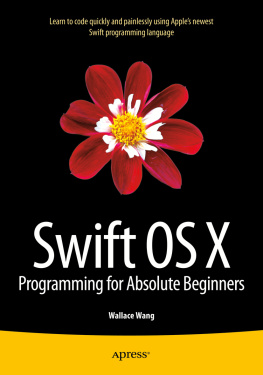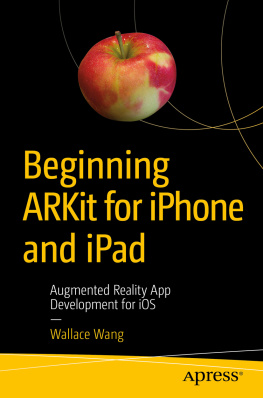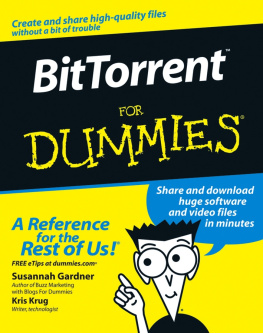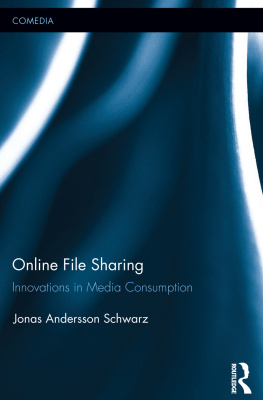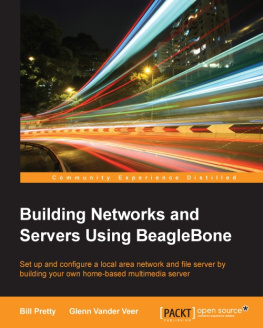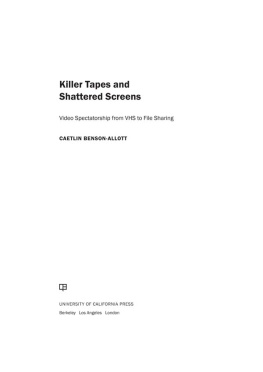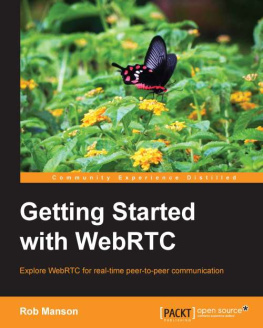Steal This File Sharing BookWhat They Wont Tell You About File Sharing
WALLACE WANG
San Francisco
Copyright 2004 by Wallace Wang.
All rights reserved. No part of this work may be reproduced or transmitted in any form or by any means, electronic or mechanical, including photocopying, recording, or by any information storage or retrieval system, without the prior written permission of the copyright owner and the publisher.
Printed in the United States of America on recycled paper
1 2 3 4 5 6 7 8 9 10 07 06 05 04
No Starch Press and the No Starch Press logo are registered trademarks of No Starch Press, Inc. Other product and company names mentioned herein may be the trademarks of their respective owners. Rather than use a trademark symbol with every occurrence of a trademarked name, we are using the names only in an editorial fashion and to the benefit of the trademark owner, with no intention of infringement of the trademark.
Publisher: William Pollock
Managing Editor: Karol Jurado
Developmental Editor: William Pollock
Cover and Interior Design: Octopod Studios
Technical Reviewer: Ray Hoffman
Copyeditor: Andy Carroll
Compositor: Riley Hoffman
Proofreader: Stephanie Provines
For information on book distributors or translations, please contact No Starch Press, Inc. directly:
No Starch Press, Inc. 555 De Haro Street, Suite 250, San Francisco, CA 94107 phone: 415.863.9900; fax: 415.863.9950;
The information in this book is distributed on an As Is basis, without warranty. While every precaution has been taken in the preparation of this work, neither the author nor No Starch Press, Inc. shall have any liability to any person or entity with respect to any loss or damage caused or alleged to be caused directly or indirectly by the information contained in it.
Library of Congress Cataloging-in-Publication Data
Wang, Wally.
Steal this file sharing book : what they won't tell you about file sharing / Wallace Wang.
p. cm. Includes index. ISBN 1-59327-050-X
1. Peer-to-peer architecture (Computer networks) I. Title. TK5105.525.W36 2004
004.6'5--dc22
2004013806
DEDICATION
This book is dedicated to all the recording artists, movie studios, and other copyright holders who find their works traded over file sharing networks. Their creations have helped make file sharing networks as useful as they are today, so the next time you download a file that you find particularly useful, support your favorite artists, movies, authors, and so on by buying their products so they can continue to create more useful files that you and everyone else can enjoy for the future.
Part 1: Learning About File Sharing
Chapter List
: Finding the Files: The Peer-to-Peer File Sharing Networks: Navigating Newsgroups: Instant Messaging and Online Chat Rooms: Finding Files on Web and FTP Sites
Chapter 1: Finding the Files
Overview
There is one thing stronger than all the armies in the world, and that is an idea whose time has come.
Victor Hugo
A computer file can be anything from a single song to a photograph, a full-length motion picture, the complete text from a book, or a computer program that sells for thousands of dollars. Because a computer file is made up of electronic data, all it does is fill up the space on your hard drive. And large hard drives are really cheap today, which means you can fill them up with many, many files at relatively little cost. Storing this stuff is just not an issue.
Computer files can also be copied with perfect accuracy and transferred flawlessly to nearly any computer in the world. In most industries, such qualities might be admirable, but in the computer industry, those same qualities spell trouble for copyright holders. If someone can make multiple copies of a song, a book, or a computer program at no cost, what will stop people from blatantly copying everything they own and passing it around to all their friends?
The answer is simple: nothing. And thats spelled trouble for the computer industry. Of course, people have been illegally copying music with tape recorders and CD burners for years, but cassette tapes and CDs arent as easy to distribute as a single file that you can email or post on a file sharing network for millions of people to copy at once.
Similarly, photocopying has threatened the copyright on books, but photocopying an entire book is usually more trouble (and more expense) than its worth. Plus, most people like their books bound, rather than in loose sets of not always perfectly copied pages.
The same can be said for the video cassette recorder, which spawned the copying of videos. But as with audio tapes, each copy of a video cassette loses some of its original quality. Its also simply too troublesome for the average user to duplicate videos on a mass scale and distribute them.
But once you store something in a computer file, copying suddenly becomes easy and fast for everyone. Instead of asking, Can it be copied? people ask, Where can I find it? And the answer is usually somewhere online where people can copy and distribute files fast.
THE INTERNET: A GRAB BAG OF FILES
If something can be copied, it probably already has been, and its just a matter of knowing where to look for it on the Internet. Although most people think of the Internet as nothing more than pretty websites and email, its really a network that connects computers.
The Internet has revolutionized the way people share files. In the old days, sharing files meant physically handing a copy of a floppy disk to another person, but with the Internet, sharing files can be as simple as pressing a button.
With people able to share files so easily, sharing files no longer requires technical knowledge as much as it requires motivation. Some people share files because they like the idea of getting back at big corporations by not paying for the copyrighted files that they duplicate and distribute to others. Others share because they just want a copy of a particular song or program, and they dont want or cant afford to pay for it. Still a few people share files in blissful ignorance of the fact that duplicating copyrighted files is actually illegal.
So over the past decade, people have found various ways to share files, always staying just one step ahead of the law. Heres a look at some of the more popular methods of file sharing.
BBS
Before the Internet, people used to share files through electronic bulletin board systems, otherwise known as BBSs. Basically, a BBS was nothing more than a computer hooked up to one or more phone lines that allowed anyone from around the world to call in. Once you called into a BBS, you could download files to your computer or upload files from your computer to the BBS for other people to copy.
While BBSs were once popular, their technical limitations prevented widespread file sharing. First, each caller had to pay their own phone charges to connect to a BBS, which meant that most BBS users tended to live in the city where the BBS was located, although some of the larger and more popular BBSs attracted the occasional long distance or overseas user.
Since the only way to connect to a BBS was through a telephone line, people found sharing files through a BBS inconvenient because telephone lines are notoriously slow for transferring huge files. Although people could still share files through a BBS, the files spread slowly and could take days, months, or even years just to reach someone else in another part of the country.


